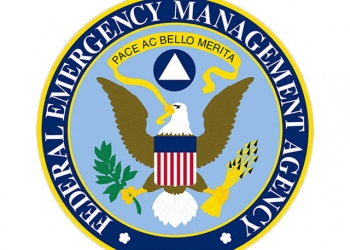News
Washington County
Posted: Jun 12, 2019 1:40 PMUpdated: Jun 12, 2019 2:03 PM
FEMA Offers Do and Do Not Guide for Assistance

17 counties in Oklahoma have been declared for Individual Assistance as part of Oklahoma's federal disaster declaration.
Patience in this time is going to be the best thing to practice at this time, Washington County Emergency Management's Executive Director Kary Cox said.
As the Federal Emergency Management Agency continues to set up in the area, residents and businesses have a lot to consider.
Washington County Emergency Management's Executive Director Kary Cox went on to say a historic event was seen in Sand Creek as storms swept across the area last month. That event caused most of the widespread flooding in Washington County.
Gauges did not exist along Sand Creek when some of the worst flooding was seen in 1986. Cox does not recall there being gauges at the creek in 2007.
Looking at the gauge in Sand Creek during this year's flooding, and talking to those who have lived next to the creek for most of their lives, Cox said they can verify that it was "historic." The gauge normally runs 3 to 6 feet. During the flooding in the area, Cox said the gauge shot up to 40-feet.
Along with Washington County, Osage and Rogers counties have access to Individual Assistance.
Affected residents and business owners in the designated counties may apply for disaster assistance by calling the Federal Emergency Management Agency's toll-free registration number. That number is 1-800-621-FEMA or 1-800-621-3362. Applications are available and can be completed online at DisasterAssistance.gov.
It is highly likely that residents and business owners in the designated counties wil see FEMA personnel going door-to-door doing community outreach in an effort to contact survivors and communicating with them regarding their needs, providing registration information and answering questions. FEMA does have important guidelines during this time. Those do's and do not's include:
DO:
- File a claim with your insurance company.
- Register for FEMA assistance (as mentioned above).
- Know that FEMA grants may help pay for temporary place to stay, make essential repairs or replace certain damaged contents.
- Inspect for structural damage before entering your home.
- Report flood damage to local officials.
- Throw away wet contents such as bedding, carpeting and furniture as they be a health hazard (i.e. mold).
- Take photo of flood damage for the insurance company.
- Keep recovery-related receipts.
- Submit a completed application for a low-interest disaster loan if you have been referred to the U.S. Small Business Administration. This is necessary for FEMA to consider you for certain grants.
- Remember FEMA grants do not need to be repaid, are not taxed and do not affect other government benefits.
DO NOT:
- Submit more than one registration per household.
- Wait for visits from FEMA or insurance adjusters before cleaning up flood damage and starting repairs.
- Wait for an insurance settlement to register.
- Worry that federal disaster assistance is taking money away from someone else.
- Assume only homeowners can apply for help. Renters may qualify for assistance.
« Back to News













